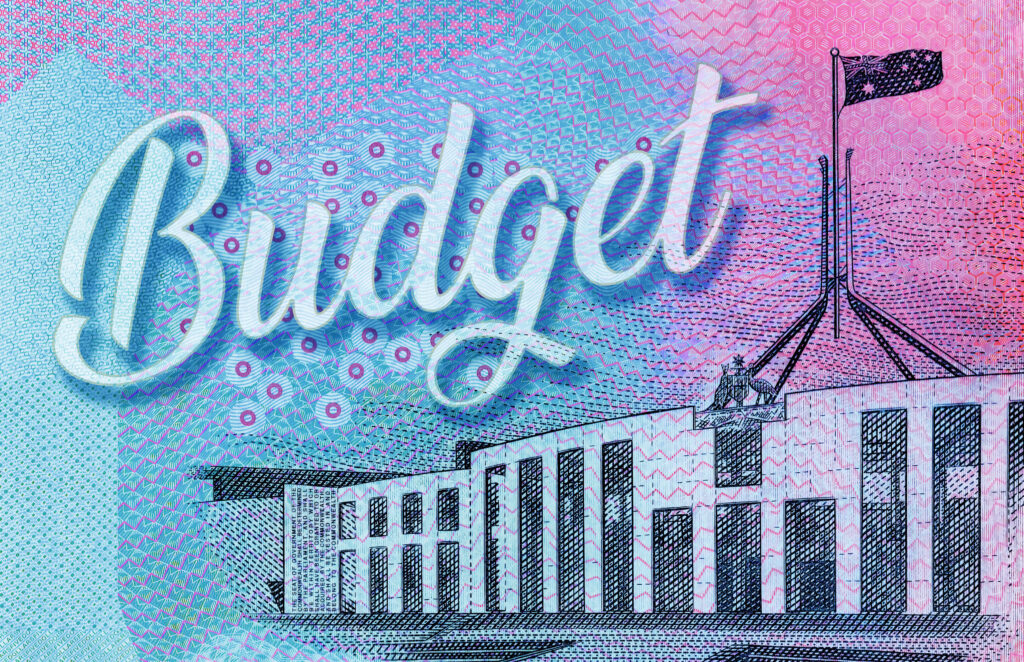It’s November, and all eyes will be looking towards the “race that stops a nation” and the Reserve Bank who meet on the same day. As the days get longer as we head towards summer the countdown for the approaching holiday season begins.
Investors are keeping a close eye on oil price movements over fears of an escalation of conflict in the Middle East. The World Bank has warned that, if the conflict widens to other countries, oil prices could rise by up to 75% in 2024. In the meantime, Brent crude fell slightly in October.
The Aussie dollar ended October close to its lowest levels in a year and far below its peak of almost 69 cents in July.
Inflation rose again in the September quarter, but growth was still lower than last year. CPI increased by 1.2% during the quarter and 5.4% annually.
Unemployment fell slightly in September to 3.6% although that was largely caused by a number of people leaving the labour market to retire or for other reasons.
A strong rise in retail trading in September, the largest since January, might be a good omen for Christmas sales although spending for the year has been historically low.
China’s economic stimulus and improved outlook saw the biggest jump in iron ore prices in a single month to around $122.

Returning to work after retirement
Employers are desperate for workers and cost of living pressures are making it tough to live on a pension. That’s a perfect mix of conditions to send some retirees back to work. But it’s smart to get good advice before you take the leap.
With unemployment rates at historic lows and employers facing a shortage of skilled workers, an increasing number of retirees are choosing to re-enter the workforce. According to recent data from the Australian Bureau of Statistics (ABS), approximately 45,000 more individuals aged over 65 are actively working compared with a year ago.i
Some retirees may have been forced to return to work to financially support themselves. National Seniors research found 16 per cent of age pensioners re-entered the workforce after initially retiring, while another 20 per cent said they would consider returning to work.ii
Declining superannuation returns combined with rising inflation and cost of living pressures may be some of the reasons why retirees could soon be returning to work.
Things to consider
Returning to work after retirement raises several important financial and logistical considerations for retirees including the effect on the Aged Pension and superannuation.
If you receive an Aged Pension and are planning to return to work, you will need to let Centrelink know you are receiving additional income within 14 days. The extra income may mean that your pension is reduced if it exceeds Centrelink’s income threshold. It’s essential for retirees to be aware of these thresholds and how their earnings may affect their pension to plan their finances effectively.
Eligible age pensioners should also consider the Work Bonus incentive. This incentive encourages age pensioners to return to work with no or less impact on their age pension. Under the Work Bonus, the first $300 of fortnightly income from work is not assessed as income under the pension income test. Any unused amount of the Work Bonus will accumulate in a Work Bonus income bank, up to a maximum amount. The amount accumulated in the income bank can be used to offset future income from work that would otherwise be assessable under the pension income test.
Effect on superannuation
Returning to work after retirement can have implications for your superannuation, particularly if you’re receiving a pension from your super fund. You can continue taking your pension from super, but you will still have to meet the minimum pension requirements.
So, even though you may not need that pension income, you have to withdraw at least the minimum, which depends on your age and your super balance. This minimum pension rate is set by the government. Failing to meet these requirements can have tax implications and may affect your pension’s tax-free status.
You can convert your super pension phase back into the accumulation phase if you wish to stop taking the minimum pension. However, be aware of the tax differences. In the accumulation phase, any income and gains are taxed at 15 per cent whereas they are tax-free in the pension phase.
Don’t forget that if you retain your pension account, then you will have to open a new super accumulation account to receive employer contributions because you cannot make contributions into a super pension account.
Other investments
If you have personal investments outside super and have been receiving a pension, your lower income may mean that you are not paying tax on any gains from them. But extra income from a job may mean you move up a tax bracket and any investment income and capital gains will then be assessed at the higher rate.
Returning to work after retirement can have far-reaching implications on your finances, particularly with regard to your Aged Pension and superannuation. It’s vital to carefully seek appropriate advice to ensure a smooth transition back into the workforce, allowing you to make informed decisions that align with your financial goals and overall well-being.
If you would like to discuss your options, give us a call.
i Retirees in demand as employers continue to face tight labour market – ABC News
ii A working retirement – choosing to return to work – National Seniors Australia

Aged care challenges in the home
Aging at home with government-subsidised funding is made possible through the Home Care Packages program.
However, a crackdown on what the funds can be used for and a shortage of support workers, can make it challenging to understand the funding available.
If you are approved for a Home Care Package you will be assessed at one of four levels. These levels acknowledge the different types of care needed.
Current annual funding for packages is $10,271.10 for level one (someone with basic care needs); $18,063.85 for level two (low care); $39,310.50 for level three (intermediate care); and $59,593.55 for level four (high care).i
It can take up to six months for a Home Care Package to be assigned following the initial assessment. Once assigned, a provider must be chosen to design a package of aged care services that is best and most appropriate for you – within the home care package guidelines.
Providers charge care and package management fees, which were recently capped at a combined 35 per cent of the package funds.
Income tests apply
The packages are income tested, with part pensioners paying no more than $6,543.66 a year and self-funded retirees paying no more than $13,087.39 a year in fees. Full pensioners do not pay an income tested fee.
Older Australians can apply for a package directly, or through their GP, via the government’s My Age Care aged care gateway.
Due to high demand for Home Care Packages, you may be offered a lower level package while you wait for the one you are approved for. You may also be given access to the entry level government support known as the Commonwealth Home Support Program – where individual referral codes are allocated to you to access interim support such as cleaning, transport or personal care at highly subsidised rates.
A revised manual released earlier this year by the Department of Health clarifying what a Home Care Package can be used for is presenting additional challenges for some package recipients looking to maximise what they can get.ii
Generally, a requested support or service must meet an individual’s “ageing related functional decline care needs”. The main categories of care and services you can get from a Home Care Package are services to keep you:
- well and independent (nursing, personal care, food),
- safe in your home (home maintenance, goods and equipment) and
- connected to your community (transport and social support).
Exclusions and inclusions
One area that is becoming more difficult for those with Home Care Packages is gardening – which is one of the most popular subsidised service requests.
Once a regular prune and possibly some new planting was an approved service, but now only minor or light gardening services can be provided and only where the person was previously able to carry out the activity themselves but can no longer do so safely. For example: maintaining paths through a property or lawn mowing.
Other exclusions causing angst amongst recipients are recliner chairs (unless they support a care recipient’s mobility, dexterity and functional care needs and goals); heating and cooling costs including installation and repairs; whitegoods and electrical appliances (except items designed specifically to assist with frailty, such as a tipping kettle).
With an aging population it is no secret that there is a shortage of support workers. While there are government programs to try and fix this, a back-up plan is needed for when support workers call in sick or are unavailable and no replacement can be found.
Most people’s preference is to remain living independently at home for as long as possible. If you would like to discuss your options to make this happen, give us a call.
i https://www.myagedcare.gov.au/help-at-home/home-care-packages
ii https://www.health.gov.au/sites/default/files/2023-04/home-care-packages-program-inclusions-and-exclusions-faqs-for-providers-version-1.pdf

When enough is never enough
How much is enough? It’s a good question. Our relationship with our finances can be a tricky one. Everyone has a different idea of how much it takes to be comfortable or even well off.
Given it is something that has such a strong influence on how we live our lives it’s unsurprising that money, or the pursuit of it, can develop into somewhat of an addiction.
The million-dollar question is how do you know if you are developing an unhealthy relationship with money and what can you do if you, or someone you know, is heading down that path?
The love of the dollar
When John D. Rockefeller, who has been widely considered the wealthiest American in modern history, was asked how much money is enough, he famously stated: “Just a little bit more.”
It’s a common approach to money – that it’s not possible to have too much of a good thing. However, we can become addicted to the act of growing our net wealth to the detriment of our daily lives. If you’re only interested in seeing your account balance go up, you might miss opportunities to put your money to work in other ways and enjoying what life has to offer.
If you can relate to the words of Rockefeller, it might be time to do some self-examination and see whether your relationship with your finances could be healthier.
Common feelings about acquiring money
Competitive
“Keeping up with the Joneses” is embedded in our culture. As a society, we’re constantly comparing ourselves to those who earn more or are wealthier than ourselves. The danger is there will always be someone better off than you (unless you are Rockefeller!). Gratitude can serve as an antidote to competition, so try shifting your focus to what you have rather than what others possess.
Of course, for many the focus is not outward but inward. The competition can be an internal struggle to meet and exceed continually shifting self-imposed financial objectives. If this is moving beyond a healthy drive for success, it might be time to celebrate your successes and focus more on enjoying your wealth.
You are what you possess
Compulsive saving can be a need to find self-worth, defining yourself by what you possess and accruing the trappings of wealth to feel whole. Recognising your self-worth goes beyond possessions and how much money you have in the bank is a key step in breaking the hold money may have over you.
Fear of loss
Being afraid of losses can keep you from making smart decisions with your money that could improve your financial situation. For example, you might be so fixated on accruing wealth and so afraid of losing money that you never invest. Having an appreciation of the relationship between risk and reward can help you make healthier decisions.
Scarcity mindset
An extreme focus on your financials can be driven by a fear of not having enough. The underlying cause of anxiety around money might be traced back to a time when you struggled. The key is to review your financial situation and let go the past to manage your finances in a way that is appropriate to your present circumstances.
Breaking money habits
That sounds easy but it can be difficult in practice. Whatever the driver of your approach to money, if you’ve been operating in a certain way for a long time, habits can be hard to break.
If you’ve been saving furiously for a home deposit it can be hard to step out of the frugal behaviour, take a breather and feel Ok about spending money again. Alternatively, if you’ve spent a lifetime building your wealth to have a wonderful retirement it can be difficult to flick the switch from saving to spending – especially if you suddenly have no wages coming in.
Recognise that old habits can be hard to break but that it is possible to change.
One thing that can help is having a financial plan, so you know how you are tracking to meet your financial goals. That’s where talking to a third party who is not so emotionally involved can be of benefit.
We are here to assist if you need assistance with any aspect of your financial life.




